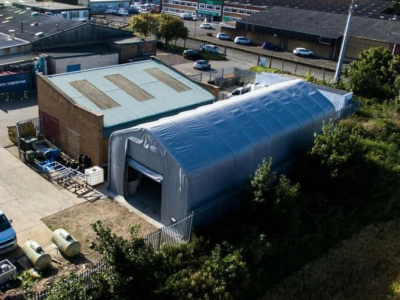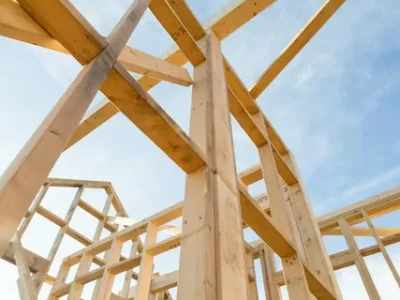
In the realm of modern manufacturing, 3D printing technology has emerged as a revolutionary force, fundamentally altering traditional production methods. Also known as additive manufacturing, 3D printing enables the creation of three-dimensional objects layer by layer, opening new frontiers in efficiency, customization, and design freedom. This article explores the profound impact of 3D Printing Technology on the manufacturing landscape, showcasing its transformative effects across various industries.
The Evolution of 3D Printing Technology
- From Prototyping to Production
The journey of 3D printing began with its application in rapid prototyping, allowing designers and engineers to quickly iterate and test their concepts. Over time, advancements in materials and printing techniques have elevated 3D printing from a prototyping tool to a viable method for end-use production.
- Diverse Printing Techniques
3D printing encompasses various techniques, each suited to different applications. Fused Deposition Modeling (FDM), Stereolithography (SLA), Selective Laser Sintering (SLS), and Multi-Jet Fusion (MJF) are among the methods contributing to the versatility of 3D printing. These techniques offer solutions for prototyping, tooling, and even the production of complex, customized end-use parts.
Transformative Impact on Manufacturing
- Enhanced Design Flexibility
Traditional manufacturing methods often impose design limitations, particularly in terms of complex geometries. 3D printing liberates designers from these constraints, enabling the creation of intricate structures and shapes that were once deemed impractical or impossible. This newfound design flexibility fosters innovation across industries.
- Customization at Scale
One of the most profound impacts of 3D printing in manufacturing is the ability to produce customized products at scale. From personalized medical implants to tailor-made consumer goods, 3D printing allows manufacturers to meet individualized needs without compromising efficiency. This shift towards mass customization is reshaping consumer expectations and industry norms.
- Rapid Prototyping and Iteration
The rapid prototyping capabilities of 3D printing have significantly accelerated product development cycles. Engineers can swiftly create prototypes, test them, and iterate designs in a fraction of the time compared to traditional methods. This agility in product development is a strategic advantage for companies navigating fast-paced markets.
- Cost-Effective Low-Volume Production
Traditional manufacturing processes often require expensive molds and tooling for mass production. In contrast, 3D printing excels in cost-effective low-volume production. This is particularly beneficial for niche markets, where the demand for specialized or limited-edition products may not justify the upfront costs associated with traditional manufacturing.
- On-Demand Manufacturing
The on-demand nature of 3D printing is transforming inventory management and supply chain dynamics. Companies can employ a “just-in-time” manufacturing approach, reducing the need for extensive warehousing and minimizing waste. This shift towards on-demand manufacturing aligns with sustainability goals and optimizes resource utilization.
Applications Across Industries
- Aerospace Advancements
The aerospace industry has embraced 3D printing for the production of lightweight, complex components. From aircraft interiors to engine parts, 3D printing offers a unique combination of strength and weight reduction, contributing to fuel efficiency and performance improvements.
- Healthcare Innovations
In healthcare, 3D printing is making unprecedented strides. The technology is used to create patient-specific implants, prosthetics, and even anatomical models for surgical planning. Customization and precision in healthcare applications are enhancing patient outcomes and opening new frontiers in medical innovation.
- Automotive Revolution
The automotive industry has integrated 3D printing for rapid prototyping, tooling, and the production of end-use parts. From interior components to complex engine parts, 3D printing streamlines manufacturing processes, reduces lead times, and facilitates the creation of lightweight structures for enhanced vehicle performance.
- Architectural Possibilities
In architecture, 3D printing is pushing the boundaries of what is achievable in building design. Construction-scale 3D printers can create intricate structures with a level of detail and complexity that traditional construction methods struggle to match. This has implications for both the aesthetic and structural aspects of architecture.
- Consumer Goods and Fashion
3D printing is influencing the creation of consumer goods and fashion items. Customized accessories, footwear, and apparel are being produced with intricate designs that were once challenging to achieve through traditional manufacturing. This personalized approach resonates with consumers seeking unique and tailored products.
Challenges and Future Outlook
- Material Limitations and Research Advancements
While 3D printing has made significant strides, challenges remain, particularly in materials. Research efforts are focused on developing new materials with enhanced properties suitable for various applications. Advancements in material science will expand the potential applications of 3D printing in manufacturing.
- Scalability and Production Speed
Scalability and production speed are areas where traditional manufacturing still holds an edge. While 3D printing excels in low-volume and customized production, efforts are ongoing to enhance the speed and scalability of the technology for broader industrial applications.
- Integration with Traditional Manufacturing
The future of manufacturing may see an integration of 3D printing with traditional methods, creating hybrid manufacturing systems. This approach combines the strengths of both technologies, allowing for the flexibility and customization of 3D printing alongside the efficiency and scalability of traditional manufacturing.
Conclusion:
3D printing technology is indisputably revolutionizing the manufacturing landscape. Its impact spans industries, from aerospace and healthcare to automotive and consumer goods. The ability to design complex structures, customize products at scale, and streamline production processes has positioned 3D printing as a transformative force in the fourth industrial revolution.
As technology continues to advance, addressing current challenges and unlocking new possibilities, the influence of 3D printing in manufacturing is poised to deepen. The integration of 3D printing with traditional manufacturing methods and ongoing research in materials science will further propel this technology towards becoming a ubiquitous and indispensable tool in the hands of forward-thinking manufacturers. The era of additive manufacturing has dawned, reshaping the way we conceptualize, design, and produce the products that define our modern world.











